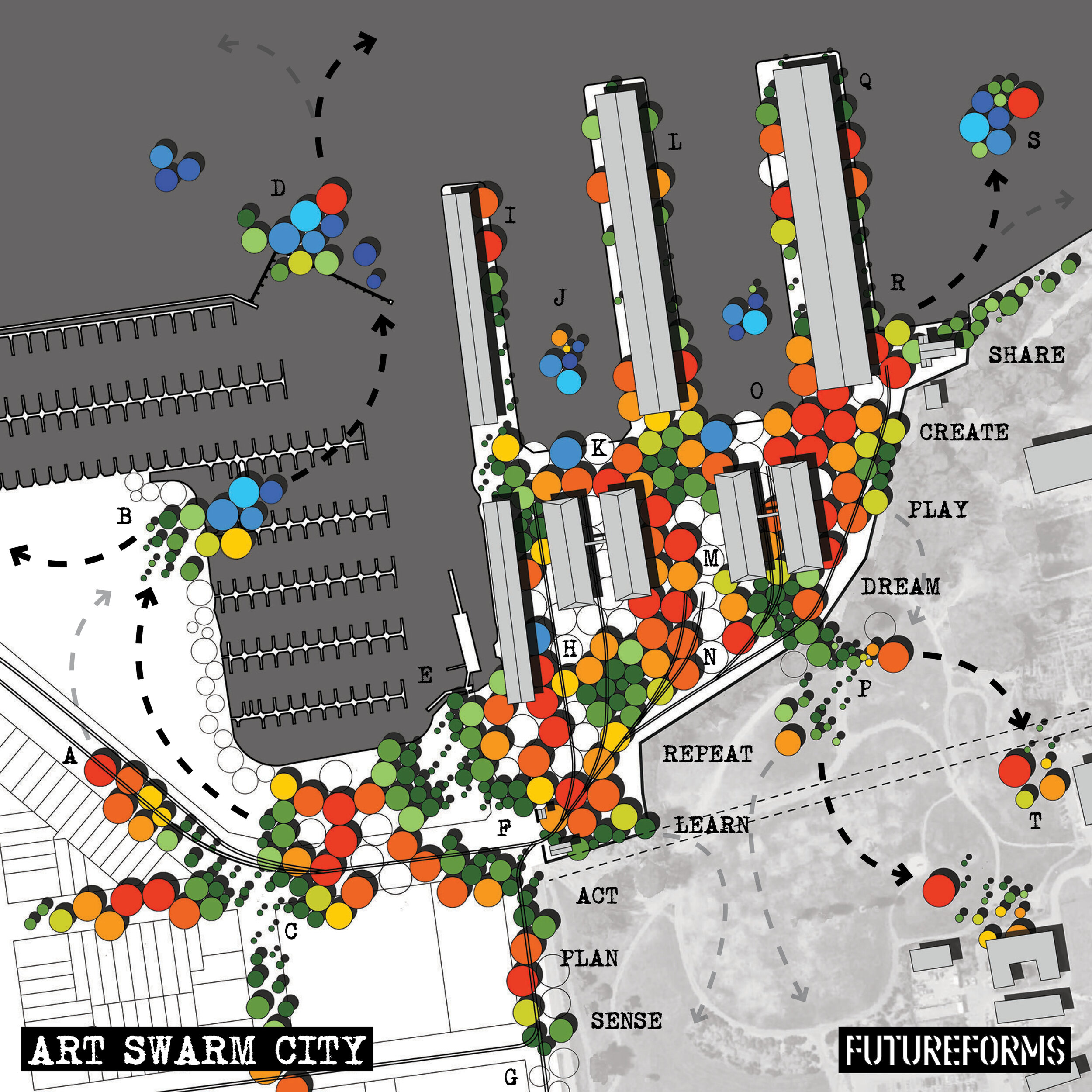We propose transforming Lower Fort Mason into a massive hub for the production, display, and distribution of public art. From its early days as a logistics and transportation base for the military, to its current incarnation as a cultural center, Lower Fort Mason is an ideal site for rethinking how art and culture can be more equitably distributed across diverse communities in the Bay Area. We also propose to transform the city of San Francisco into the world’s largest outdoor public art gallery, open, accessible, and free for all. This massive redistribution of cultural resources would bring art to all corners of the city and region, while also bringing color, sound, light, and vitality to the streets.
Fort Mason would become home base for hundreds of mobile art platforms. These mobile platforms would serve as stages for displaying, experiencing, learning, and conversing about art. These battery-powered stages would use cutting-edge autonomous vehicle technologies to distribute art to the masses in both coordinated and random ways. While these circular platforms would be clustered and maintained at Fort Mason, they would continuously move along city streets and sidewalks, pausing in city parks, public spaces, under the freeways and bridges, along the shoreline.
Jason Kelly Johnson & Nataly Gattegno
Futureforms Founders, Professors at California College of the Arts
Press: Art Swarm City featured in San Francisco Chronicle on 26 July, 2020. “Floating symphonies, audience igloos: Future visions of the arts.” by Sam Whiting
SF Chronicle: “For the near term and maybe the long one too, an arts event that involves the gathering of people will likely have to move outdoors, or be staged inside spaces large enough to throw open the doors and let the wind blow through. That means things are going to have to change for most of the performing arts sector. The old standards just won’t work in a world of social distancing and contamination concerns, not even for jazz.So what will work? And how different will, or should, we experience performing arts? To find out, we empaneled a broad cross section of 22 Bay Area cultural thought leaders and proposed a thought experiment: If you were given a swath of land and allowed to reconfigure aspects of it to create safer arts experiences, what would it look like? To frame the exercise, we asked them to imagine a wide open space like Fort Mason, with a meadow and parking that’s near water. Otherwise, there were no rules, no budgets, no zoning limitations.And, to clarify, this is purely hypothetical. The Fort Mason Center for Arts & Culture is not planning such a reconfiguration. But it is planning to replace an exodus of tenants that includes the San Francisco Art Institute and the arts program of City College of San Francisco. Earlier this month, Friends of the San Francisco Public Library announced that it would not re-open its used bookstore, which has been in Fort Mason for 30 years.”


